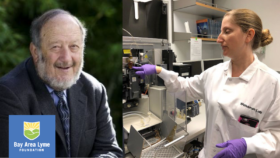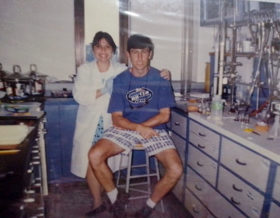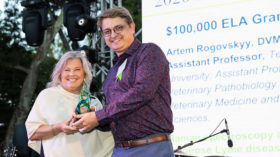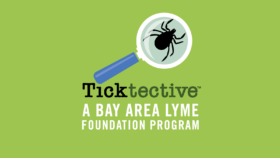FOR IMMEDIATE RELEASE
Bay Area Lyme Foundation Selects National Winner of the 2024 Emerging Leader Award for Research of Combination Therapies to Treat Chronic Lyme Disease
Winner Trever Smith, of Tufts University, will collect novel therapeutic data to develop a first-of-its-kind drug interaction compendium for Lyme Disease
PORTOLA VALLEY, Calif., August 1, 2024—Bay Area Lyme Foundation, a leading sponsor of Lyme disease research in the US, announces the recipient of the 2024 Emerging Leader Award (ELA), which is designed to support new and innovative research and aims to attract aspiring new scientific talent to the field of Lyme. This year’s winner, Trever Smith, PhD, Research Assistant Professor of Molecular Biology and Microbiology at Tufts University School of Medicine, will receive $150,000 for his work to identify precise treatment combinations that more effectively target persistent Borrelia burgdorferi (Bb) infection in persistent Lyme patients. For this research, Dr. Smith intends to develop a first-of-its-kind drug interaction compendium to help prioritize the most effective combinations for testing in pre-clinical models of Lyme disease. To do so, Dr. Smith will leverage techniques he and other researchers use to identify effective drug combinations against other infectious diseases, such as tuberculosis, and translate them for Bb. Due to the difficulty in diagnosing and treating Lyme disease, it is estimated that over two million patients currently suffer from the debilitating later-stage symptoms of persistent Lyme in the US, and there are currently no FDA-approved treatments for the persistent symptoms of Lyme disease.
“While combination therapies to treat chronic Lyme have shown promise in early research and are widely used with success in other disease areas, the vast majority of chronic Lyme patients are not able to benefit from combination therapies,” said Wendy Adams, research grant director, Bay Area Lyme Foundation. “Dr. Smith’s research aims to change this, as it builds on his previous research success in tuberculosis to bring the hope of combination therapies for Lyme to the forefront and seeks to give clinicians and researchers a better understanding of the advantages of combining current FDA-approved treatments in Lyme disease.”






